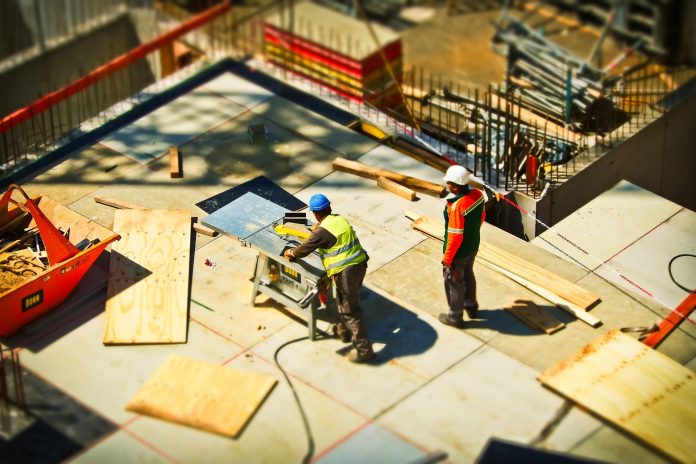Mobile systems backed with cloud-based technologies offer construction sites a previously unseen level of convenience and ease-of-use. Bryan Christiansen of Limble CMMS looks at five of these systems and how they can improve construction workflows
In the construction industry, there has been a continuous drive for more digitisation to achieve various benefits. An integral part of that digitisation is mobile technology largely due to its ability to support seamless workflow.
A variety of mobile systems now exist with functions to improve every aspect of workflow at construction sites.
1) Project planning systems
The first major undertaking of any construction project is project planning. From designing the structure to ordering various materials to recruiting labour (whether as workers or subcontractors), project planning helps to provide a specific process to help construction managers plot, manage and execute a construction project.
Previously, project planning was managed through a combination of paper records, spreadsheets and enormous charts. These days, the need for operational excellence and optimal resource allocation means there is minimal allowance for waste or inefficiencies. Consequently, mobile project planning systems have become more relevant for better worksite productivity. They provide access to accurate and reliable project data on the go and usually in real-time.
With mobile project planning systems, a construction manager can expect:
- A centralised repository for projects document storage, sharing and control.
- Resources management features to monitor resource usage compared to original estimates.
- A complete view of their projects from start to finish.
- Budget management and accounting features for efficient management of the project’s budgets and forecasts.
- Real-time communication and collaboration among all users that improves the coordination of field operations.
- Time management features such as team dashboards, shared calendars and task prioritisation.
2) Reporting systems
A common challenge on many construction sites is that everyone is so busy doing the work, they struggle to find time to document what’s been done. But with mobile daily reporting systems, it has become significantly easier to create and view daily reports. Site workers can easily take pictures or videos with their mobile devices, build up a report and upload it to be reviewed while they move on to another task. This speeds up the reporting process and minimises the chances of procrastination.
Typically, these systems allow users to report and track:
- Labour productivity based on actual labour progress against estimates.
- Internal issues, daily logs, weather information, crew mix, work performed, delays and disruption hours, accident reports, equipment and usage, and comments.
- Small issues before they escalate into bigger issues because they were not noticed early enough.
3) Mobile maintenance systems
The working condition of the equipment being used on a building project can to a large extent determine the project’s success. Therefore, the construction industry requires that its vehicles, heavy machinery, and tools operate at maximum efficiency and function with minimal downtime. Also, each piece of construction equipment is usually expensive and needs to be maintained to specific standards to avoid serious problems later.
Without an equipment maintenance plan covering the entire duration of the project, there are high risks of extended equipment downtime, missed deadlines and safety incidents. A project maintenance plan will help to ensure that maintenance staff workflow is well-managed, that every asset gets the required attention, maintenance tasks are well scheduled and spare parts are optimally utilised. Prioritising maintenance will also help to lower overall maintenance costs long term. For instance, better maintenance practices will reduce the costs associated with lost productivity due to employee and equipment idle time.
That being said, maintenance management even on the busiest construction sites can be streamlined with mobile-enabled computerised maintenance management systems (CMMS).
Mobile CMMS allows its users to achieve the following:
- Generate, assign and track work orders for all maintenance tasks on the go.
- Schedule servicing when the tools are available and when the equipment is not in use.
- Communicate with team members and update maintenance-related information in real-time across single or multiple locations.
- Monitor equipment health remotely.
- Where predictive maintenance technology is being used, users can receive notifications and alerts of potential equipment failure and intervene before functional failure occurs.
- Generate and view a variety of maintenance reports at any time.
4) Blueprint management systems
Construction blueprints, or construction plans, offer site workers a detailed overview of vital project information such as measurements, quality specifications and building codes. There are several types of construction blueprints being used today, with some of them appearing quite complicated.
However, no matter how complex they appear, every specification they contain matters. As a result, it is essential that blueprints are executed with precision and that the relevant parties have access to the information contained. Again, mobile systems are useful in this regard.
With mobile blueprint management solutions, users can:
- Access and distribute project information such as plans and specifications, punch lists, documents and photos from any location.
- Access plans and documents that are automatically hyperlinked and sorted in versions.
- Easily search for and view full sheets.
- Publish multiple sheets to the field in minutes.
- Quickly locate any defects and cooperate with other planners and subcontractors.
- Insert older drawing versions without overwriting the latest set.
5) Tool tracking systems
Most construction managers and workers can relate to the frustration of missing equipment and tools just when they are needed the most. Where a project spans multiple locations, workers can easily lose track of tools and smaller mobile equipment. Mobile-first tool tracking systems are designed to address these problems. They enable site workers to manage inventory and pinpoint the location of registered items.
Specifically, mobile tool tracking systems allow construction workers to:
- Access a central record of tools movement and history.
- Track who is responsible for each tool and small equipment at any time.
- Use data import technology to import lists from spreadsheets (eg Excel) and easily build tools catalogue.
- Assign tools and equipment to teams, specific jobs or individuals.
- Utilise their mobile phone or tablet camera as a barcode scanner when searching for tools.
- Confirm tool and equipment availability.
In conclusion
Mobile technologies continue to facilitate different processes in modern business. For the construction industry, they are proving to be increasingly valuable for standardising previously cumbersome processes such as reporting, maintenance and so on. Most importantly, they offer up-to-date insights across different stages of the project lifecycle, thereby saving project teams considerable time and money.
Bryan Christiansen
Founder and CEO
+1 801-851-1218














